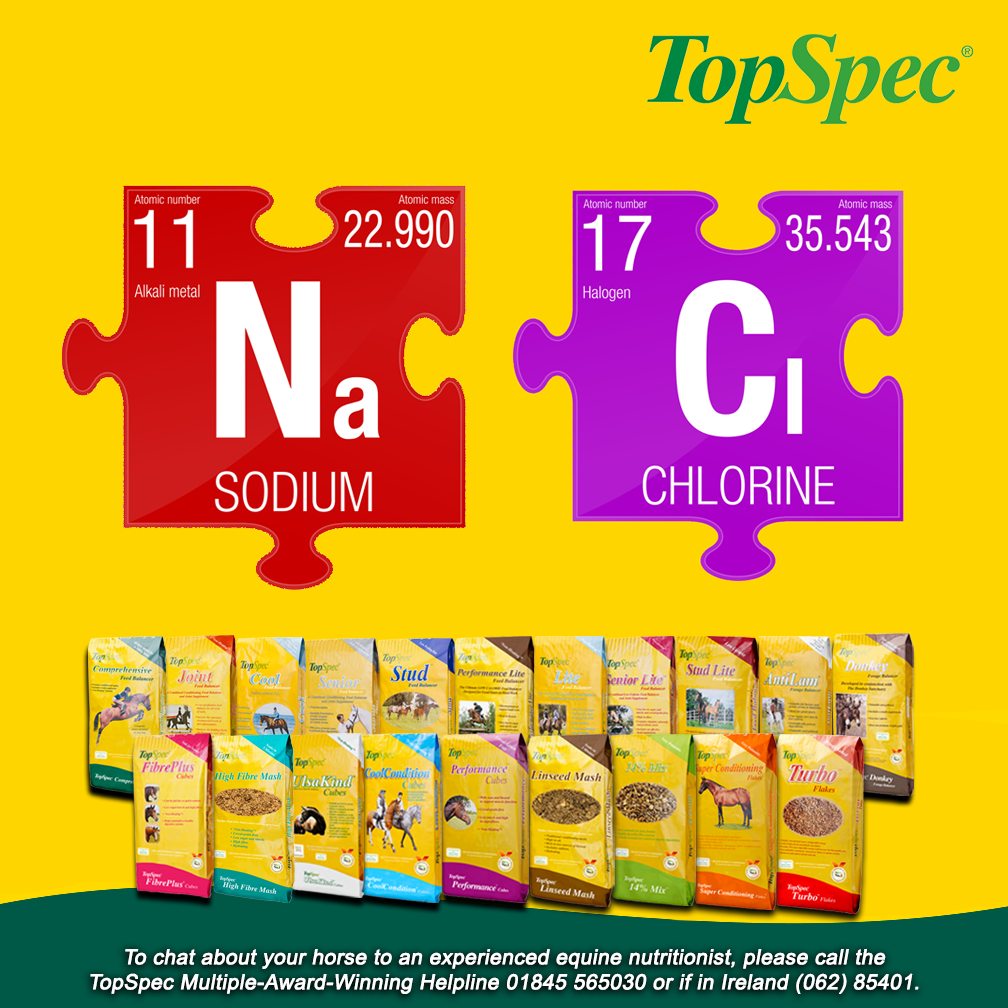From £6.99

The Role of Sodium Chloride in a Horses Diet - Horse Supplements
Sodium and Chlorine join together to form salt (Sodium Chloride) and they have a major role in maintaining fluid balance in the horse. Because of this, these minerals are also called electrolytes.
Sodium has a key role in maintaining blood volume and fluid balance. Not surprisingly sodium is important in regulating thirst but its other functions tend to get overlooked. These include a role in nerve impulse transmission and muscle function, as well as a transport function for substances (including glucose) across cell membranes.
Chlorine works with sodium in an opposing way to maintain fluid balance and is also a component of gastric acid in the stomach and bile in the liver and so it is important for digestion.
Sodium and chloride are lost in significant quantities in sweat, so requirements for electrolytes will increase for horses in work. Requirements for sodium depend on the amount lost in sweat and the amount supplied in the diet, so nutritional advice on correct supplementation is highly recommended.
Sodium is found in only low levels in grass (fresh or conserved) and cereals, so is therefore a vital addition to the diets of most horses in the form of salt. Providing a salt-lick is good practice but does not guarantee sufficient intake, therefore horses that sweat need supplemental salt in their diet, especially if receiving little or no hard feed (blends and compound feed are fortified with salt). For those in work, salt should be added to the feed for 2 days after sweating, in addition to allowing access to salt lick 24/7. Horses working hard, and sweating heavily, will require a commercial electrolyte preparation on top of salt for the following 48 to 72 hours.
Deficiency of sodium when sweat losses are not adequately replaced can be seen as loss of performance, fatigue, weakness and e.g. Tying-Up, and loss of thirst. Toxicity is rare but if horses voluntarily over-consume salt from e.g. a lick, they will urinate excessively (provided water is freely available) and so will have a very wet bed. In this situation remove the lick and add the required amount of salt to the feed instead.

